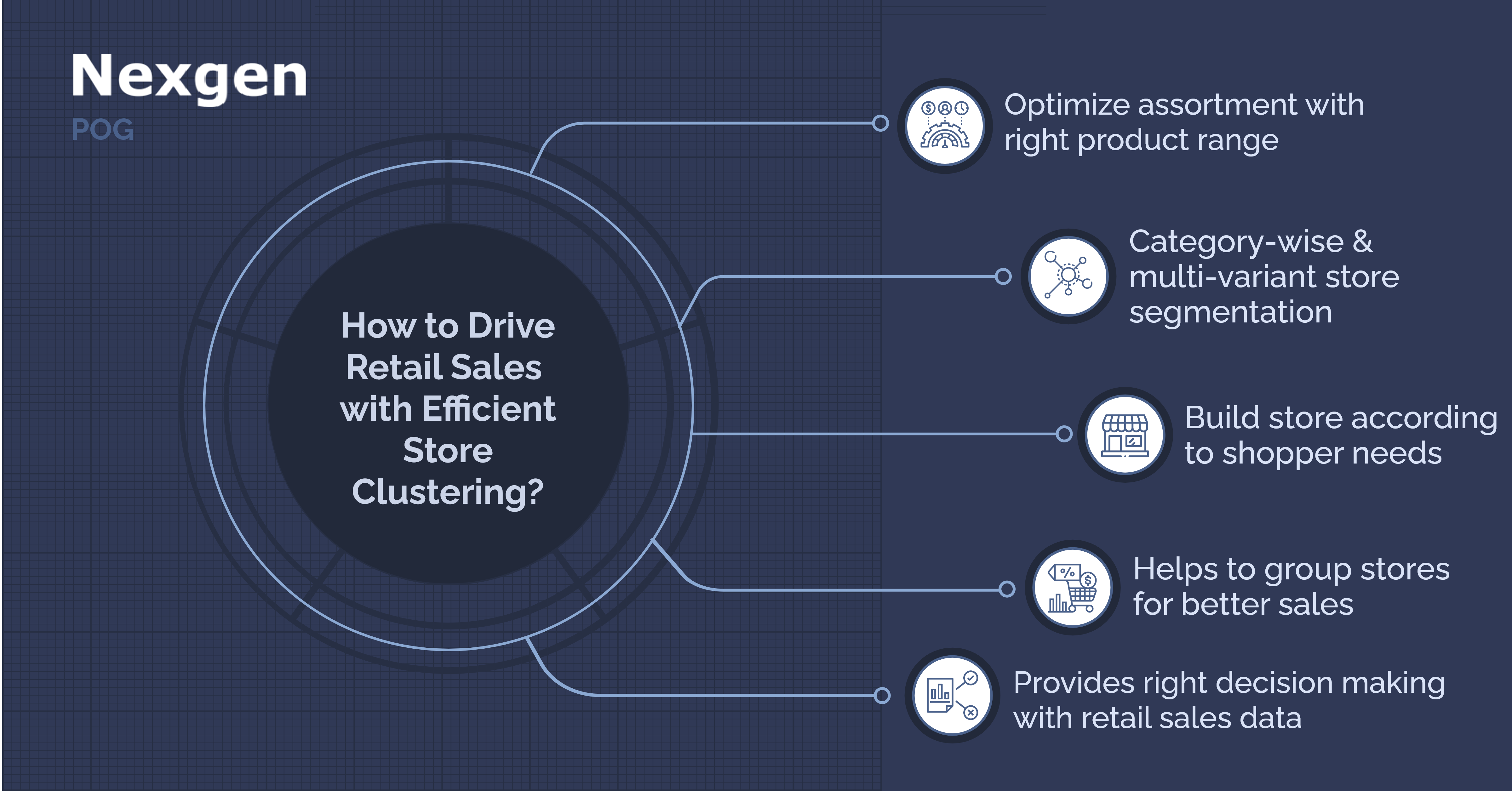With the recent macroeconomic disruptions, retailers aim to optimize assortments for their retail growth by providing the right blend of product range for each store cluster. This helps to offer a specific range of products, and at the same time increases your retail sales.
Store clustering offers retailers a targeted approach towards sales. This helps to understand what opportunities are to match the product range to generate sales. This enables you to take ranging decisions for retail stores and deliver a compelling reason for customers to walk through your store doors. Therefore, retailers who have not limited their business to one channel can use clustering with the help of planogram software. Planogram is the visual merchandising, that helps retailers effectively plan their product range according to the store type. So, the following are the types of store clustering in a retail store:
- Store grading: Retailers grade their store by analyzing the store sales with a percentage of average sales across all other stores. This helps retailers to calculate their business, whether their business is successful in appreciating shoppers' perspective or not.
- Category-wise store segmentation: Retailers can categorize stores into a more shopper-focused approach by considering factors such as store size, similar geographic location and climate conditions, shopper purchasing behavior, and shopper attributes such as income, age, demographics, ethnicity and more.
- Multi-variant store segmentation: Store analysis is used by retailers to divide the store into different classes accordingly. This provides information on individual store segmentation to understand the store’s performance and helps retailers to improve their retail sales.
- Statistical clustering:Retailers can subdivide stores where items are similar to each other, but not identical. This will be different from the items in other clusters. For example, some household products will be of basic, luxury and premium types.

3 Store Clustering Steps to Drive Retail Sales
- Focus target shopper groups: Knowing your target customers will help you understand how they shop and what drives them to purchase. This helps to build the store according to shopper needs and increase retail sales. Especially when everyone shops differently and has different shopping behaviors. Retailers should know the types of shoppers, whether they are impulse buyers or mission-driven shoppers. This helps to merchandise, and promote their stores effectively.
- Cluster your retail store: The next step is to cluster the stores based on focused target customers. For this, retailers need to group their stores together so that they can target the demands of target markets and achieve more profit.
- Analyze store clusters effectively: Once clusters have been made, retailers can make retail decisions based on sales data. This helps the category managers of different stores to effectively fill their store shelves with products based on market demand and customer preferences.
Overview of Nexgen POG
Nexgen POG is a robust and user-friendly cloud-based visual merchandising tool. It is designed for quick and efficient planogramming with minimal effort. Planograms can be designed by easily dragging and dropping the products. The multi-device compatibility feature of POG allows you to obtain, share and edit planograms on any device, including your phone. It helps in designing store-specific planograms for increased product visibility and sales.
Get Your Free Trial Now!